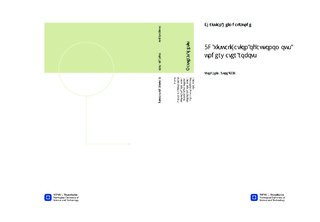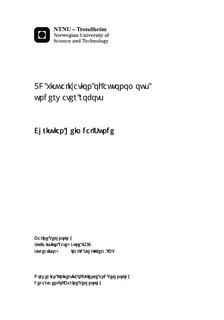| dc.contributor.advisor | Schjølberg, Ingrid | nb_NO |
| dc.contributor.author | Sunde, Christian Heimdal | nb_NO |
| dc.date.accessioned | 2014-12-19T12:11:47Z | |
| dc.date.available | 2014-12-19T12:11:47Z | |
| dc.date.created | 2014-08-20 | nb_NO |
| dc.date.issued | 2014 | nb_NO |
| dc.identifier | 739361 | nb_NO |
| dc.identifier | ntnudaim:11049 | nb_NO |
| dc.identifier.uri | http://hdl.handle.net/11250/238901 | |
| dc.description.abstract | This thesis has an objective aimed to develop a functional real-time visualization of an underwater robot manipulator, and present the relevant theory and steps related to this system. Then the system should be prepared for connection to a real robot manipulator. Such a system is important for increased safety in underwater operations and to improve the operator s situation awareness. The manipulator that was modeled and tested in this thesis was an 'Raptor - Force Feedback Manipulator' produced by Kraft TeleRobotics.To develop the system it was important to choose the right software for use, and verify that the end product was working properly. Errors in the system can be critical in a real situation where an operator trusts the information that the software provides. Also the consequences of an accident during operation can be fatal for human safety and the environment.With a 3D model of the manipulator received from the manufacturer, it was possible to analyze and take measurements of the manipulator for use in the visualization software. The software that was chosen was the Robot Operating System (ROS) framework. This framework has a huge amount of opportunities including monitoring and visualization of robotic systems, which makes it a good choice both for this thesis and in terms of further development. It has not been used much in underwater robotics, but arguments for not using it hasn't been revealed during the work with this thesis.By using basic kinematic theory and the Denavit-Hartenberg representation the forward kinematics for the arm was derived and explained in detail. It is important to know this theory when implementing the model into the software. Measurements from the analysis of the model and CAD-files (Computer-aided design) was applied and described in URDF-files (Unified Robot Description Format) so that it could be imported into the software. The software solution was configured and customized to be easy and intuitive in use, and an explanation of how to run and test the system was included. In addition, the hardware set-up and procedures for how to connect the software to a real manipulator was produced and documented.To verify that the system was working properly, simulated events was conducted for each part of the model. These simulations confirmed that the system was acting as wished. With the real manipulator up and running, this software should be ready for use with just a little effort put into the signal input connection. | nb_NO |
| dc.language | eng | nb_NO |
| dc.publisher | Institutt for marin teknikk | nb_NO |
| dc.title | 3D visualization of autonomous underwater robots | nb_NO |
| dc.type | Master thesis | nb_NO |
| dc.source.pagenumber | 73 | nb_NO |
| dc.contributor.department | Norges teknisk-naturvitenskapelige universitet, Fakultet for ingeniørvitenskap og teknologi, Institutt for marin teknikk | nb_NO |

